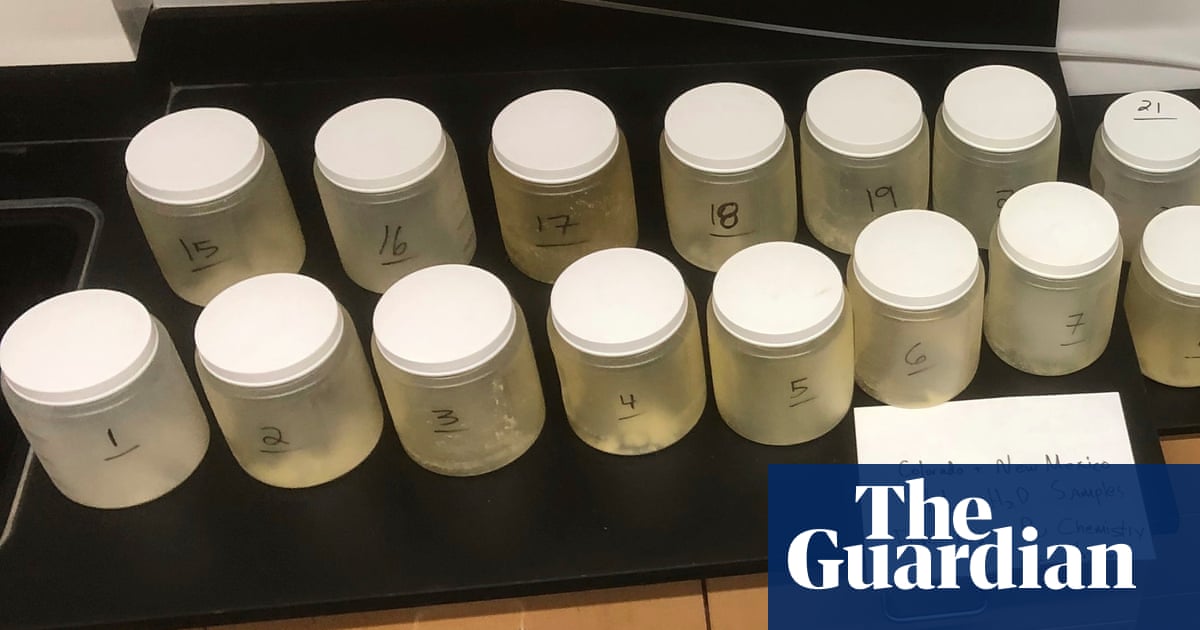Much of the land near the atomic bomb’s birthplace was converted to recreational areas, but toxic waste remains
Soil, plants and water along popular recreation spots near Los Alamos, New Mexico, the birthplace of the atomic bomb, are contaminated with “extreme concentrations” of plutonium, a new study has found, but calls for the federal government to act have been dismissed.
Michael Ketterer, a Northern Arizona University scientist and lead researcher on the project, said the plutonium levels in and around New Mexico’s Acid Canyon were among the highest he had ever seen in a publicly accessible area in the US during his decades-long career – comparable to what is found in Ukraine at the site of the Chornobyl nuclear disaster.
The radioactive isotopes are “hiding in plain sight”, Ketterer said.
The comparison to Chernobyl is obviously powerful rhetorically, but is it relevant? Is plutonium the most dangerous set of isotopes at Chernobyl? Are there other decay products at Chernobyl that make it an exclusion zone which are not present at Los Alamos?
It should be a scientific discussion which informs public policy, and framing it as comparable to Chernobyl is perhaps misleading.
fuck no, currently most important isotopes are cs-137 and sr-90, both with half lives about 30 years. plutonium isotopes have half lives from 14 (241; probably tiny amount) 90 (238; also not much) to thousands of years (239 and 240; most likely bulk of it). what did the most damage in chernobyl were even shorter lived (days) and so spicier isotopes that normally are given time to decay in spent fuel pools
Yeah this is an article freaking people out over Pu-238, Pu-239, and Pu-240. All of which are alpha emitters (radiation easily blocked by clothes and skin) and all of them have half lives measures in years or decades.
This article has juuust enough detail to get a reader riled up without actually educating them enough to understand what they are reading.
As a tangent, I hate the way reporting often lists the longest half lives, ignoring that fact that the longer the half life of an isotope is, the less dangerous it is. Highly radioactive isotopes are highly radioactive because they have short half lives.
If you think Pu238 with its half-life of 90 years is scary, check out Fe60 with its half-life of 2.6 million years. That must be super scary!
/s
I’m aware that everything with a higher atomic weight than iron wants to be iron.
Public health advocates also called for the government to post signage warning visitors so they can make an informed decision about using a trail contaminated with toxic waste.
Members of the general public can’t make this sort of informed decision. They don’t have the very specific background knowledge necessary. Plutonium in small amounts is not dangerous unless you eat it or breathe it in as dust. How much Plutonium dust is in the air near this trail? What is the level of radiation exposure from it compared to the background level that everyone is exposed to? What risk of cancer does the increased exposure correspond to?
These are questions that experts are able to answer but almost all hikers aren’t. The general public already trusts experts to regulate nuclear power plants, radiology equipment, etc. It makes no sense to want a warning sign here unless you already live in a state of constant paranoia.
It’s ironic to use public ignorance as a reason to keep information from them.
I don’t see it as a matter of keeping information from the public. The wording on the sign would be technically true, but the clear implication would be that the area is particularly dangerous. Why else would there be a sign? If the area is not particularly dangerous (which is what experts have determined) then the sign is actually causing the public to believe something false.
It’s like those California warnings about cancer-causing chemicals in pretty much everything. They’re not literally false but they don’t take relative risk into account and the right thing to do is to ignore all of them. To the extent that the public doesn’t ignore them, the public has been misinformed by the California government.
I feel like this is the difference between marking something as “plutonium area” versus something designed to target the fears associated like saying “Warning: Minor Risk from Plutonium Exposure” and then post a blurb in decent size font below that explaining the warning.
Because what California does is post a generalized warning that doesn’t quantify the risk and does not inform the public accurately about what the warning exists for and that is not helpful.
do you know there’s always chloroform in chlorinated water? it’s some laughable ppt of it, but analytical chemists got so good at detecting random shit they can make entire career out of scaring morons
The exposure level and immediate danger to those using the trails is low despite the high plutonium level
This led me to look for more details: https://searchlightnm.org/the-long-path-of-plutonium-a-new-map-charts-contamination-at-thousands-of-sites-miles-from-los-alamos-national-laboratory/
Though I can’t find any credibility ratings for the source
edit: More
https://apnews.com/article/plutonium-contamination-los-alamos-6b1c2cab6fdd31a442ac98c7f030bc27
Is this where they filmed that John Wayne movie and everyone later died of cancer?
Sweet, time to go collect some free plutonium!
Isn’t the wind spreading it around the globe?
Yup. The radiation from the tests spread it around so much that there’s a
geographicgeological level in the rock record.Do you mean geologic, not geographic?
How does that work though? Sedimentary rocks formed in the last 100 years must be way deeper than any of the soil that could be affected by the atmosphere?
Or am I overthinking this and you’re saying that there’s an indicator in recent soil deposits that correlates to radioactive testing.
The current geological era will have measurable levels of radioactive isotopes different from expectations. Just like we can tell when plants started making oxygen from the Fossil record and rock chemistry, we’ll be able to tell when humans started having some physics fun time in the atmosphere.
Other fun fact is that we’ve added a decent set of new markers for future archeologists to date things with.
I think we’ve caused some of the carbon dating techniques to need a little * in the future, since we’ve shifted the baseline level around quite a bit.
We also added some new radioactive isotopes to the mix, like strontium, which show up in your teeth. Not new-new, but measurably increased levels.
We can actually use the levels in your teeth to predict your age within a year or two.The discovery of this is part of what motivated the partial nuclear test ban that had both the US and Soviet Union stop testing in the atmosphere.
Maybe it’s soil vs rock? I think that there wouldnt have been enough time for new layers to form given how slow of a process it is
Yeah it’s in the soil. It can be dated.
I did mean geologic. Coffee was only beginning to be consumed when I wrote that.
The same is true of where I grew up, only miles away from Trinity site. Where the first atomic weapon was detonated.
No wonder Alamogordo is such a strange place
I never gave that any thought, but you are correct!
The Guardian - News Source Context (Click to view Full Report)
Information for The Guardian:
MBFC: Left-Center - Credibility: Medium - Factual Reporting: Mixed - United Kingdom
Wikipedia about this sourceSearch topics on Ground.News









